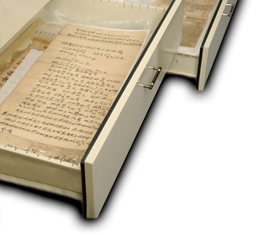|
1. The Earthquake at Dawn On April 21, 1935, at 6:02 AM, the Hsinchu-Taichung earthquake struck with a magnitude of 7.1 on the Richter scale. Its epicenter was located in Sanyi, Miaoli, which is present-day Taiwan. The Houli and Qingshui areas in today's Taichung suffered the most severe damage. Ultimately, the earthquake caused the deaths of over 3,000 people and injured more than 10,000, making it the deadliest natural disaster in Taiwan's recorded history. According to the "Taiwan Earthquake Record" published by the Government-General of Taiwan in 1936, at 6:02 AM on April 21, 1935, a tremendous ground rumble was heard from southern Hsinchu Prefecture to northern Taichung Prefecture, followed by a powerful earthquake. The epicenter was located approximately 3 kilometers southeast of Mount Guandaoshan in southern Hsinchu Prefecture, around the middle reaches of the Da'an River. Areas such as Ta-Hu in Hsinchu Prefecture, Miaoli, Fengyuan, and Dajia in Taichung Prefecture experienced ground displacements, indicating the extensive impact of the earthquake.
Figure 1 Map of Damage from the 1935 Hsinchu-Taichung Earthquake
Figure 2 Taiwan Shinminpo reporting the disastrous situations in various regions in an extra edition format.
According to the "Taiwan Earthquake Chronicle" issued by the Government-General of Taiwan in March 1936, the total number of fatalities was 3,279, with the majority being indigenous Taiwanese. The number of injured was nearly 12,000. Due to the seismic vulnerability of rural Taiwanese buildings, the disaster caused considerable devastation, with nearly 18,000 households completely destroyed. Those whose homes collapsed were forced to live outdoors or in temporary shelters. From the maps depicting the extent of housing damage and casualties from the earthquake, it is observed that the damage to buildings in Hsinchu Prefecture was particularly severe, although the number of casualties was relatively low. This might be attributed to the habit of early rising among the Hakka people in Hsinchu, who had already evacuated from their homes by the time the second tremor occurred at 6:25 AM.
Figure 3 Damage Map of Homes Affected by the Taichung-Hsinchu Earthquake
Source: Map of Damage from the Hsinchu-Taichung Earthquake, Yang Zhao-jia Collection (LJK), 1935, Digital Collection of Archives of Institute of Taiwan History, Academia Sinica.
Figure 4 Casualties Map of the Taichung-Hsinchu Earthquake
Source: Map of Damage from the Hsinchu-Taichung Earthquake, Yang Zhao-jia Collection (LJK), 1935, Digital Collection of Archives of Institute of Taiwan History, Academia Sinica.
Figure 5 Extent of Damage in Qingshui
Source: Photos Related to the Taiwan Earthquake of 1935 Part 1, Yang Zhao-jia Collection (LJK), 1935, Digital Collection of Archives of Institute of Taiwan History, Academia Sinica.
"I woke up exceptionally early this morning, brushing my teeth by the well at 6:02 AM when suddenly there was a loud rumbling sound, swirling around me. I couldn't stand steady on my feet—it was a major earthquake. The whole family panicked and fled to the deep well. After about twenty minutes, as I was clearing the dust from the shaken bookshelf, another strong tremor came, roaring like a bull, causing roofs to collapse and ashes to fall everywhere. Everything was overturned, walls and doors were dangerously close to collapsing. We were all at a loss, too scared to stay indoors, so we moved to the deep well, our hearts still trembling... Today's epicenter was at Da'an River in Miaoli, where more than six hundred people died, and over a thousand households were almost completely destroyed..."In this passage, the mention of "roaring like a bull" indicates that strong earthquakes are often accompanied by ground rumblings. In another entry, Lin Hsien-tang (林獻堂) from Wufeng documented the situation of his relatives affected by the disaster, including collapsed brick houses, shattered tiles, damaged cars, and injuries from falling. He also mentioned, "...there were light tremors more than ten times throughout the day, and at night, I dared not sleep indoors. Yet, I alone managed to sleep soundly."
Figure 6 April 21, 1935 Diary of Lin Hsien-tang
Source: The Diary of Lin Hsien-tang, 1935, Taiwan Diary Knowledge Bank.  Figure 7 April 21, 1935 Diary of Huang Wang-cheng |
 |






.jpg)
.jpg)

